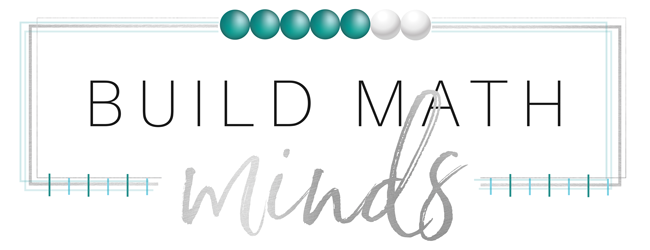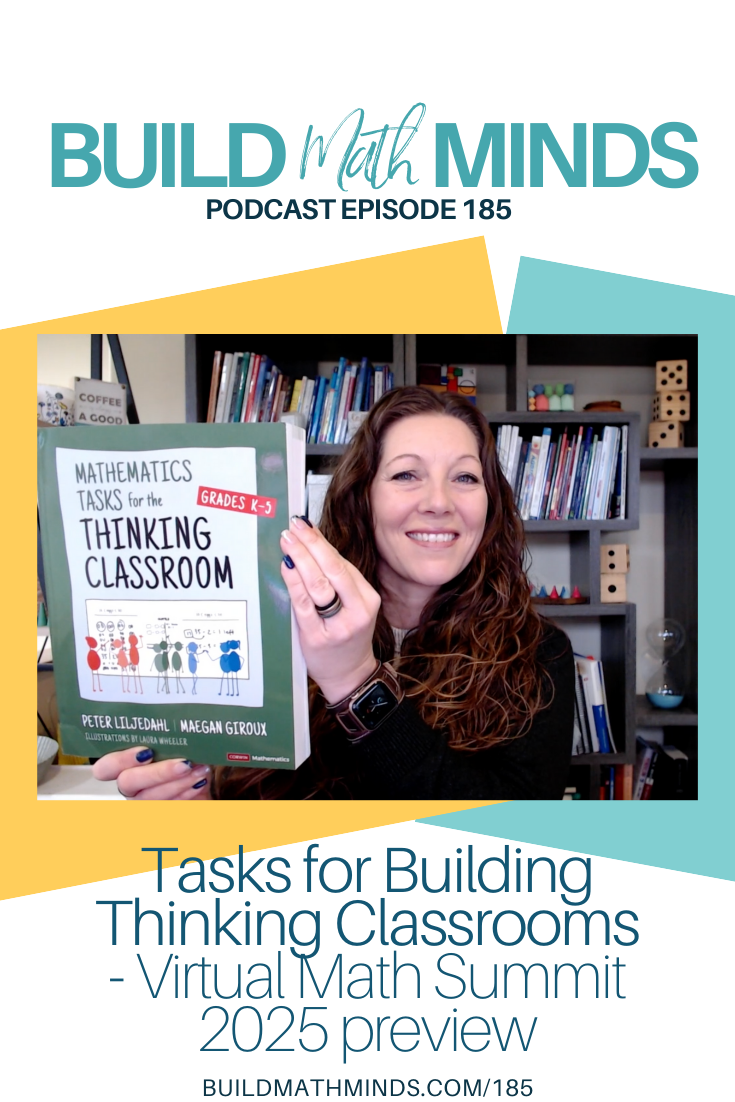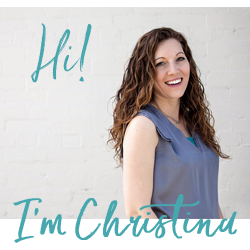Watch Peter Liljedahl’s 2023 Virtual Math Summit session
Register for the Virtual Math Summit
Peter Liljedahl’s book Building Thinking Classrooms in Mathematics
Peter Liljedahl and Maegan Giroux’s book Mathematics Tasks for the Thinking Classroom
Welcome fellow Recovering Traditionalists to Episode 185: Tasks for Building Thinking Classrooms – Virtual Math Summit 2025 preview
I’m getting so excited for this year’s 2025 Virtual Math Summit! You can see the full line-up of speakers at VirtualMathSummit.com/speakers and if you haven’t registered for the FREE summit you can do that at VirtualMathSummit.com.
In this episode I’m giving you a preview of the opening keynote session, but that session is going to be LIVE so I don’t have a clip to share with you. However, our keynote presenter has presented before so I’m going to share a snippet from that.
We’re diving into one of the most transformative approaches in mathematics education: Building Thinking Classrooms. I’m sure you’ve heard of BTC in some capacity because it has become quite popular and whenever something becomes so popular, you will always have people against it. There are people out there who think BTC is not great. The main concern about it is that teachers aren’t doing any instruction. They give a task and then don’t guide their students at all on how to approach the problem. That unfortunately does happen. Any time something new comes along in education, we get people who take only part of the idea and run with that. If you want to create a Building Thinking Classroom it is way more than giving students a mathematical task and then sitting at your desk while they struggle to figure it out without any guidance.
Yes, the idea is to get students doing the thinking because in traditional classrooms, research shows that only about 20% of students actively think during lessons, and even those students only think for about 20% of the time. The goal of Building Thinking Classrooms was to change that by creating environments in the classroom that get kids thinking, instead of sitting and parroting back steps & procedures, by getting them up out of their seats by using Vertical Surfaces to do their work on and working together in randomly assigned groups of three to solve mathematical tasks. And that seems to be where most people stop learning about BTC and just start doing.
If that’s all you know about Building Thinking Classrooms then I’d encourage you to dig a bit deeper to learn more about how to implement them effectively. First place to start is by watching Peter’s session he did during the 2023 Virtual Math Summit. Here’s a short clip from that video:
“It turns out that when students are sitting, they feel anonymous, and the further they sit from the teacher, the more anonymous they feel. And when students feel anonymous, they disengage. And that’s both a conscious and a subconscious act. Having the students stand and work in these vertical erasable surfaces has taken away their anonymity, not in a sort of public outing sort of way. They just don’t feel anonymous. They don’t feel invisible. They feel seen, and so they don’t disengage.”
Of course you should read the original book Building Thinking Classrooms in Mathematics. If you didn’t know Peter and Maegan Giroux released a new book this last year, Mathematics Tasks for the Thinking Classroom that you should also get.
That book does give you 50 tasks to help you build your thinking classroom but to me, the most important part of the book is about the implementation of the tasks. This book is full of information about your role as the teacher in selecting tasks but also how to guide your students while they are building their thinking.
In Chapter 4 Peter & Maegan write:
“If we want our students to think, then there needs to be a balance between ability and challenge. This is where flow happens. This is where the optimal experience happens. This is where engagement happens. And this is where thinking happens. There isn’t a lot of thinking when students are bored and frustrated…Both the non-curricular and the curricular tasks in this book are accompanied by extensions to help you maintain flow. This is the essence of the work of the teacher in a thinking classroom – to keep students in flow by increasing the challenge as their ability grows. Here’s the problem, though – timing matters. If we increase challenge before the ability has fully developed, rather than keep students in flow, we push them into frustration. Luckily, there are some things inherent in thinking classrooms that help us get the timing right.”
Peter and Maegan will be sharing more insights at the upcoming 2025 Virtual Math Summit, where they are doing our opening session LIVE on February 22nd at 7am Pacific.
To learn more about Building Thinking Classrooms, the tasks you should be using, and the pedagogies around implementing them, go register for the 2025 Virtual Math Summit so you can watch their session, visit VirtualMathSummit.com
Until next week, my fellow Recovering Traditionalists, keep letting your students explore math, keep questioning, and most importantly, keep Building Math Minds.




